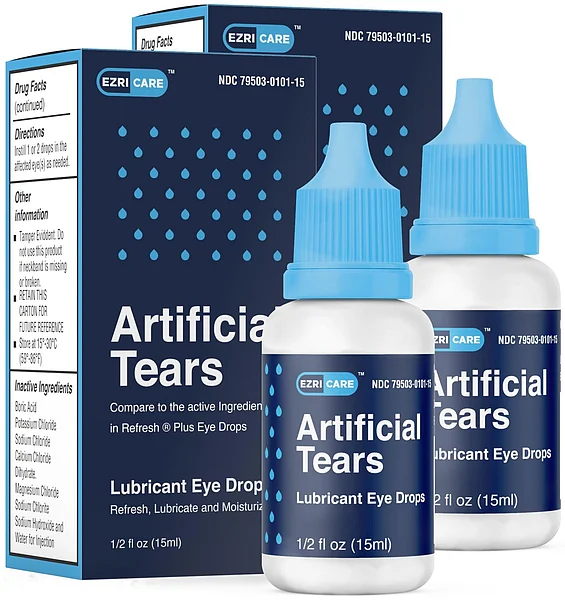Get Healthy!

- Cara Murez
- Posted March 6, 2023
Following Infection Outbreak, Experts Offer Guidance on Safe Use of Eyedrops
An outbreak of serious bacterial infections in 13 U.S. states linked to use of artificial tears has prompted experts to offer tips for keeping dry eyes safe.
Five of the 58 people infected with Pseudomonas aeruginosa had vision loss, and one person died, leading to the recall of EzriCare and Delsam Pharma artificial tears. Some of those sickened also reported lung and urinary tract infections.
Tests of opened bottles used by those affected found a rare, highly drug-resistant strain of the bacterium -- one never before reported in the United States, according to the U.S. National Eye Institute.
While it's unclear if the contamination occurred during or after manufacturing, and while testing continues, there are ways regular users of artificial tears for dry eye disease, contact lens use and refractive surgery can keep themselves safer.
"Formulations with preservatives reduce the risk of bacterial growth and potential infection,"said Dr. Chantal Cousineau-Krieger, an ophthalmologist at the National Eye Institute.
"However, commonly added preservatives such as benzalkonium chloride, polyquaternium, or sodium chlorite themselves can be irritating to the eye, especially if used five or more times a day," she said in an institute news release.
Repeatedly using an eyedrop bottle that contains no preservatives can lead to contamination, increasing infection risk.
"People who require preservative-free artificial tears can purchase single-use, individual dose vials, which cut contamination risk significantly,"Cousineau-Krieger said.
Some preservative-free artificial tears are in bottles designed to prevent contamination. They have a special tip that blocks airflow back into the bottle, keeping the drops sterile longer after opening.
Anyone using eyedrops of any kind should wash their hands beforehand and avoid touching the tip of the bottle to their eye or eyelids, which can increase the risk of contamination.
P. aeruginosa is a considered an opportunistic pathogen, meaning that it tends to cause infection only when defense mechanisms are not working properly -- for example, in someone who is immunocompromised as a result of chemotherapy. Infection can also occur in conjunction with use of contact lenses.
"While infection with the specific, highly resistant bacterial strain at the heart of the outbreak is rare, P. aeruginosa as a bacterial species is everywhere. It lives in soil, ponds and lakes, and even tap water,"said Dr. Suzanne Fleiszig, professor of optometry and vision science at University of California, Berkeley. "Humans have evolved all these defenses. And under normal circumstances, we don't get infections with opportunistic pathogens."
Experts said it's important to visit an eye care provider anytime you suspect an eye infection or have symptoms of pain, redness, discharge, sensitivity to light or the persistent feeling that something is in the eye.
"Providers seeing patients with potentially vision-threatening infections need to be especially vigilant about identifying the causative pathogen and determine its antibiotic sensitivity profile to assist in selecting the best antibiotic,"said Dr. Penny Asbell, a clinical professor of ophthalmology at the University of Tennessee College of Medicine.
While not all eye infections need a culture, Asbell recommends culturing if the infection is aggressive, widespread, associated with vision loss and/or not responding to treatment.
An infectious disease specialist can help select the best antibiotics.
"Antibiotic resistance is a growing problem globally. The extensively drug resistant P. aeruginosa strain is new to the United States, and its emergence highlights the risk of extensively resistant organisms,"Asbell said in the release.
If you often need to use artificial tears, get an eye exam to determine what the problem is and what is the safest treatment.
More information
The U.S. Centers for Disease Control and Prevention has more on Pseudomonas aeruginosa.
SOURCE: U.S. National Eye Institute, news release, March 2, 2023







